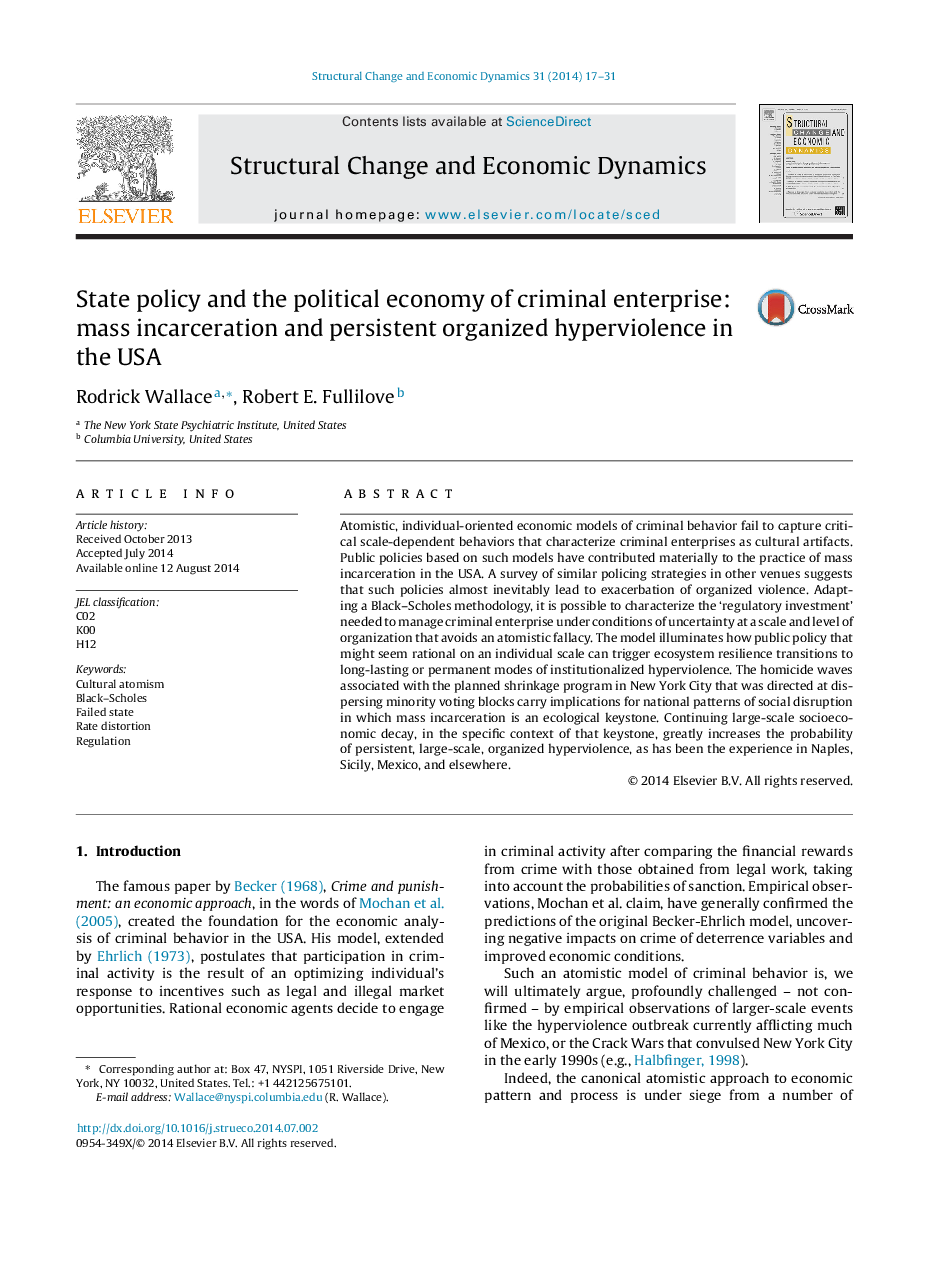| Article ID | Journal | Published Year | Pages | File Type |
|---|---|---|---|---|
| 988420 | Structural Change and Economic Dynamics | 2014 | 15 Pages |
•Challenges Becker's atomistic analysis of criminal behavior.•Treats criminal enterprises as cultural artificats subject to emergent behaviors.•Applies a Black-Scholes model to calculate the ‘violence cost’ of regulating a criminal enterprise under State constraints.
Atomistic, individual-oriented economic models of criminal behavior fail to capture critical scale-dependent behaviors that characterize criminal enterprises as cultural artifacts. Public policies based on such models have contributed materially to the practice of mass incarceration in the USA. A survey of similar policing strategies in other venues suggests that such policies almost inevitably lead to exacerbation of organized violence. Adapting a Black–Scholes methodology, it is possible to characterize the ‘regulatory investment’ needed to manage criminal enterprise under conditions of uncertainty at a scale and level of organization that avoids an atomistic fallacy. The model illuminates how public policy that might seem rational on an individual scale can trigger ecosystem resilience transitions to long-lasting or permanent modes of institutionalized hyperviolence. The homicide waves associated with the planned shrinkage program in New York City that was directed at dispersing minority voting blocks carry implications for national patterns of social disruption in which mass incarceration is an ecological keystone. Continuing large-scale socioeconomic decay, in the specific context of that keystone, greatly increases the probability of persistent, large-scale, organized hyperviolence, as has been the experience in Naples, Sicily, Mexico, and elsewhere.
